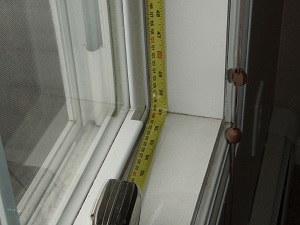The Benefits of Secondary Glazing

Like double glazing, secondary glazing will help to reduce noise pollution and prevent heat loss from your home. In this blog post, we will spell out many of these benefits in terms that are easy to understand.
How does secondary glazing work?
Secondary glazing allows you to attain many of the benefits of double glazing, but for a fraction of the cost. When you invest in secondary glazing, a supplementary window frame is installed within the interior section of your existing single-glazed window frame. This allows you to achieve many of the benefits of double glazed windows without the associated cost. Secondary glazing is commonly installed during the installation of single glazed windows.
Secondary glazing and listed buildings
Secondary glazing is commonly installed in listed buildings or non-listed buildings that are located within conservation areas such as National Parks. Such properties are regulated when it comes to making modifications. These regulations prevent property owners from installing double glazing because double glazing is deemed to unduly alter the exterior look of the property. In contrast, secondary glazing is permitted because it does not alter the exterior look of the property.
The benefits of secondary glazing
We now discuss the benefits of secondary glazing:
Benefit #1: Noise reduction
Secondary glazing undoubtedly reduces the amount of noise entering your home. Tests prove secondary glazing reduces noise pollution by up to 80%. If you live nearby a school, motorway, airport or railway line, then you will thus benefit from investing in secondary glazing due to this reduction in noise pollution. In fact, secondary glazing is far superior to double glazing when it comes to a reduction in noise pollution. Why? Because secondary glazing involves a 100mm gap between glass units.
For double glazed units, this gap is around 25mm. This greater distance between glass panes in secondary glazed units explains why secondary glazing is highly effective at blocking out noise from the outside world. Furthermore, secondary glazing makes use of thicker laminated glass when compared to double glazing. This laminated glass is around 6.4mm in thickness. This superior thickness of glass accounts for secondary glazing’s excellent ability to block out outside noise from your home.
Benefit #2: Heat loss reduction
Secondary glazing is excellent when it comes to reducing heat loss from your home. Many people replace single glazed windows with double glazed equivalents merely because they wish to prevent heat loss from their home. Another option is to retain your current windows, and instead invest in secondary glazing. This allows you to attain the benefits of double glazing without the associated cost.
Benefit #3. Cheaper than double glazing
When you invest in secondary glazing, you do not need to replace your current windows. When you invest in secondary glazing, you must merely purchase a supplementary unit. This unit attaches to the interior section of your current window frames. The cost associated with secondary glazing installation is small compared to the cost of replacing your windows in their entirety. Furthermore, unlike double glazing installation, you may be able to install secondary glazing yourself. This will, therefore, save on installation costs.
Benefit #4. More convenient as no requirement to replace windows
As mentioned above, when you invest in secondary glazing, you do not have to replace your current window frames. This means secondary glazing installation is not subject to Building Regulations and these associated costs. Thus, the installation of secondary glazing is highly convenient when compared to other options in this area.
Benefit #5. Improves the security of your home
Secondary glazing acts as an additional barrier when it comes to keeping out burglars and other unwanted and uninvited individuals. Unlike other types of windows, it is extremely difficult to open secondary glazed windows from the outside. Many reputable suppliers offer secondary glazing that’s made from safety glass. This further improves the security features offered by secondary glazing.
Benefit #6. Secondary glazing is environmentally sound
Because secondary glazing prevents heat from leaving your home, you are less likely to utilise your central heating during the autumn and winter months. Thus, secondary glazing helps you to reduce your carbon footprint. Furthermore, secondary glazing does not require you to replace your old windows. Throwing away old windows contributes to landfill waste, which is bad for the environment. Lastly, secondary glazing is made of aluminum. Aluminium is a recyclable material.
Get in touch today
Having read this blog post on the benefits of secondary glazing, we hope you are convinced of its value. If you would like to learn more about secondary glazing, get in touch with Bebington Glazing today on 0151 645 3830. Alternatively, you may contact us through this website. Bebington Glazing use static laminated glazing.
Further resources
Below, we list a number of resources where we discuss secondary glazing in further detail:

Comments
No Comments
Add a comment